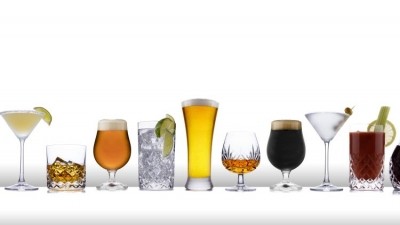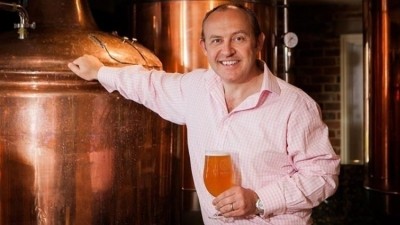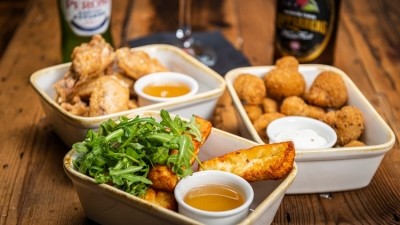The Cask Project
VIDEO FEATURE: Quality time at Greene King
Susan Chisholm’s favourite beers
Keg beer: Icebreaker – 4.5% ABV pale ale
Cask ale: Abbot Ale – 5% ABV ale
Seasonal special: Pave The Way – 4.6% ABV pale ale
Chisholm spoke to The Morning Advertiser and you can watch part of the interview in the video on this story and read what else she had to say below.
Quality starts before a beer is even made. Chisholm says it starts before the raw materials come to the Bury St Edmunds base.
“We have a lot of suppliers and malt is a very big material for us to brew beer from so we check the quality of the malt and make sure our suppliers are giving us what we’re asking for. It’s the same with any other ingredients that go into the beer.
“We’re very lucky with the water. We’ve got our own boreholes on-site and we have a testing schedule for our water.
“You’ve got your four main ingredients of beer, which is the malt, water, the hops and yeast. We talk to our hop growers make sure that they can supply the varieties we want in the right quantity and to the right standard. While the yeast is our own strain, which we’ve got records going back to the late 1920s for.”
She explains the origins of Greene King’s yeast is suspected to have been Charrington’s. Chisholm also oversees the Greene King archive, which means ledgers and business records are kept on-site and an archivist has collated all the material including physical artefacts, such as maltings kits. A search for the origin of the yeast has led to some letters received from Charrington’s back in the 20s but it can’t be proved.
Having been at Greene King since 1978, Chisholm is “perfectly certain” the same yeast has been used by the brewery since then and talking to the people who worked there before her leads her to believe it has certainly been in common usage for a long time before that.
“We have it DNA checked a couple of times a year to make sure that it doesn’t change,” she states. “To make sure it’s still producing the characters that we want it to.”
So what would happen if it were to change? The yeast is in cold storage, along with six other strains, including its Belhaven yeast at the National Yeast Collection. The Greene King IPA variant would be pulled out it would be propagated to put it back into the system.
“But it’s very unlikely anything could go wrong because the plant itself is like a giant propagation plant and we’re checking the yeast all the time every day in the lab, it’s being checked for its health and its cleanliness. In 45 years, I’ve never encountered an issue where we’ve had to actually get rid of any,” Chisholm confirms.
Results logged
Once materials coming in are approved more checks are needed and this involves a “huge sampling schedule” with about 65% being completed by the operational workforce – this includes employees working in the brewing and packaging divisions. This could be on plant, such as when malt deliveries come in or they will be come into the laboratories and doing the testing alongside the lab staff.
Meanwhile, tasting results are logged on a database. When somebody adds a piece of data in, it will tell you whether it’s in or out of specification. Chisholm says: “If something’s out of specification, we have a stop point to ask questions such as ‘can this beer go forward?’, ‘what’s to stop it going forward?’ or perhaps we need to do a blend plan if, say, the bitterness is too high and you could find a brew that’s got a bitterness that’s a wee bit lower, and you put them together – that occasionally happens.”
With all these policing points comes the introduction of trained tasters at every single stage. This take place in the brewhouse and will be done at the beginning of fermentation and at the end.
“Samples will be brought into the laboratory by the guys who are making the beer at all these different stages, they’ll bring them in for a certain amount of testing. Some of the testing they will do themselves,” Chisholm explains. “They’re highly trained operators, they know how to do alcohol, pH, colour, bitterness, all the routine tests and they may be trained tasters as well.
“When we get new recruits into the lab, it’s a good six months before we deem them to be fully trained in all the techniques because they have to learn all of those physical and chemical parameters, how to do the testing and they have to know a lot about brewing microbiology. And they also have to know about sensory aspects because they are going to be trained in how to taste beer and how to spot if things are not right – and how to spot when they are right.”
The pH meter will tell you whether a beer is within the specification, which is good “but your taster will tell you if something hasn’t happened correctly in the fermentation such as the yeast being put under stress perhaps or the temperature is not be right,” Chisholm says. “The yeast can produce flavours you may not want in that beer so the brewer will then look at that information and decide what you can do next – you may just have to let the beer rest for a little bit longer because there are certain things yeast will create that it will then mop up again so you don’t smell the thing that shouldn’t be there, for example.”
The taste test
So how can someone be taught how to taste beer? To start off, there’s a check to see whether one can taste at all so that’s basics of salt, sour, bitter and sweet. Next up is beers that have been spiked with certain compounds, such as diacetyl, which tastes like butterscotch – “that’s a big no no for us”.
Chisholm adds: “We would make sure people can identify obvious ones that you’ll find in a less well-run pub, such as acetic (vinegar taste). We would use this as a spike in beers and start to talk the language of tasting because we do use a lot of words are not common but are specific to brewing.
“We train people over a few weeks and then sit them for a test of at least 12 characters we want them to be able to identify. If they can’t identify those, they won’t come on to the taste panel.
“Some people are very sensitive to certain compounds and they’ll smell it a mile off while some need it at slightly higher levels to be able to pick it up, which is why we have a panel. Every morning at 9.15am a group of eight to 10 people gather around a table to taste beers we’ve recently packaged or are in the process of being packaged.”
For visual checks, there are instruments that will test for colour and we there is also testers eyes. If the beer is going to be bright beer, such as a keg lager, it’s is held up to a light to check one can see the filaments through it.
There’s also thing called a ‘haze meter’ so that will check for any particulates in the beer that shouldn’t be there if you’re looking for bright beer.
With cask beer, it’s got to have yeast in it because you have secondary conditioning in the cask, so yeast levels are tightly controlled and it’s very important the right amount of residual sugar and yeast is there so the secondary conditioning/fermentation in the cask takes place.
“That’s why we have a very well controlled cellar in the tasting suite and we are tasting those beers every day to make sure they are conditioning as they should so I know, hand on heart as quality control manager, every beer that’s leaving that racking plant is correct – and if it’s dealt with properly in the cellar it will always serve properly.
“We produce some of unfiltered beers, which are very popular. Sometimes they are the more hoppy beers and hops will produce quite a lot of hazy material in a beer. We have one called Level Head, which is an unfiltered pale ale and Icebreaker, which is slightly paler and uses different hops so has a different character to it.
“They are very, very tasty. We spent a lot of time developing them to make sure that they’ve got all the right flavours and they are consistently good. They’re keg beers so wouldn’t be my natural choice but they are lightly carbonated and there is that criticism that they can be over-fizzy in keg format but they are very nice and I would go for those if they’re on the bar.
“I love cask ale because it’s such a simple process, you’ve brewed it and fermented it, and then you’ve put it into a container. It’s as simple as that and it’s just the nicest, if done properly, it is just the nicest beer. To me, it’s like mature cheddar versus processed cheese.”







